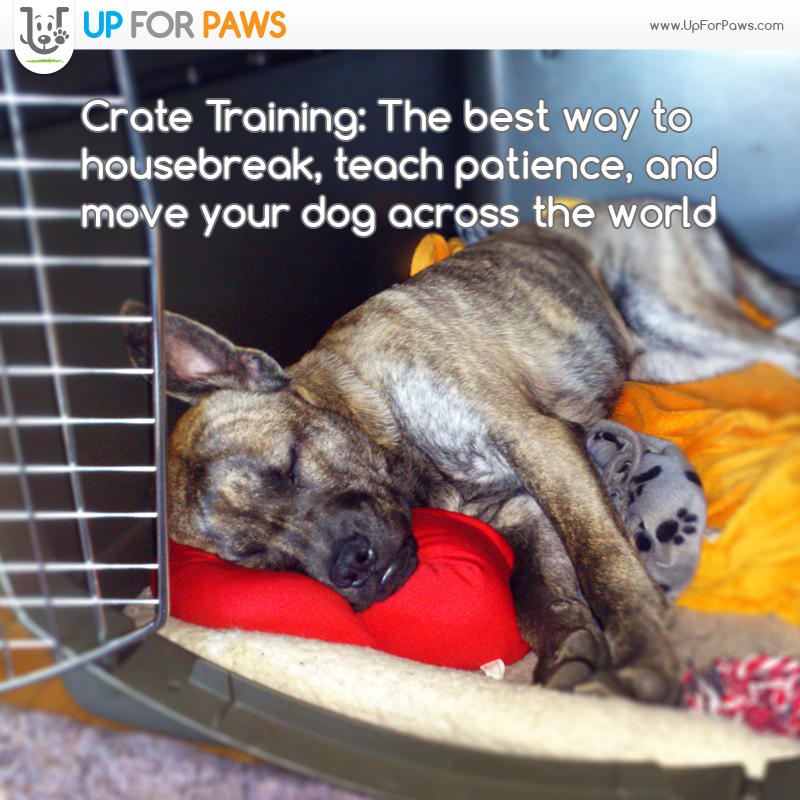What is Crate Training and why is it good for your dog?
The best way to housebreak, teach patience, and move your dog across the world

What is Crate Training and why is it good for your dog? Singaporeans tell me that it’s ‘cruel’ and ‘unnecessary’. But is it really? What do you think?
You may have heard of the term ‘crate training’, and it may even have come up in discussions with other Singapore dog owners. Quite often when the term is brought up, dog owners in Singapore tend to dismiss it as ‘cruel’ and ‘unnecessary’.
What is crate training and why is it good for your dog?
Crate training is a technique used by many reputable dog breeders and trainers to teach puppies to withhold elimination while in the house. If the training is done right, these crate-trained puppies eventually grow up to love their crates, which doubles up as a den-like room they can call their own and that they can retire to in order to relax and settle in.
Why should you crate train your puppy or your dog? First and foremost, if you have a puppy, this technique is the greatest housebreaking tool up your sleeve. If carefully taught, crate training enables your puppy to withhold their ‘pee’ and their ‘poo’ every time they are in their crate, and will eliminate only when they are let out. (Warning: do not encourage your puppy to eliminate inside the crate, as crate-training is NOT potty-training. This will cause your training to backfire.)
Crate training is not just for puppies
With a teen or adult dog, the crate serves as their own personal ‘den’, which is a place for them to relax peacefully. Regardless of your dog’s temperament, your dog will learn to love their crate and will voluntarily go in and lie down when they want to rest. I have friends who love to sleep with their dogs in their bed, which is perfectly fine. However, one thing to note is that you must be consistent. If your dog is taught to sleep in your bed every day, then kicking her out of your bedroom and into her crate whenever you feel like it may cause anxiety and distress. If you are consistent in encouraging your dog to rest in her crate, then she will do exactly so. Having her own crate also tends to dampen the occurrence of separation anxiety, and fosters independence in your dog to be by herself in her personal den.
On top of that leaving your dog in a crate keeps her out of trouble. Chewing, window barking, door barking, pacing and circling – all these can be avoided if she feels safe and relaxed in her crate while you are out at work.
Another reason to crate train your dog is of course if you are moving away for the short or long term. With 15 out of every 1,000 Singaporeans migrating away each year, chances are high that they would take their dogs with them when they leave. (For a political discussion, go here, and leave the dog discussion to this blog!) Contrary to the myth that moving dogs in and out of Singapore is really challenging, I would like to highlight that if you crate train your dog and complete all your paperwork in time, then migrating your dog has become as easy as hopping onto a bus and then getting off at your destination. Do not leave your dog behind unless you absolutely have to. Bring them with you, or rehome them with someone who loves them even more than you do.
There are so many ways to misuse a crate, and many horror stories you may have heard grow out of such mistreatment. You must never keep your puppy or your dog trapped in the crate against their will, nor can you keep them in the crate for longer than they can handle it.
Do not:
- Shut the door on an anxious dog. For instance, when there is thunder; when he’s whining; when he needs to eliminate
- Force crate training on dogs with separation anxiety. Dogs with separation anxiety must be treated for the symptom before crate training. All dogs must be relaxed and calm during crating.
- Use the crate as punishment.
- Encourage your dog to eliminate inside her crate.
If you are consistent and patient in crate training, your crate will become the most useful tool you can ever have! We have trained Chowbox such that when we say “Bedtime!” he runs into his crate and lies down. He sees his crate as a comfortable safe haven and when we are watching television or lounging around the living room, Chowbox goes into his crate to relax. In fact, Chowbox is able to relax quicker inside his crate than if he’s lying on the floor of the house any where else.
Do you crate train your dog? Have you been successful? Share your experiences with us!
Jun Yeo is the owner of Up For Paws, a dog daycare that believes in positive reinforcement, responsible dog ownership, and a dog-friendly Singapore city for the win! She can be contacted at woof@upforpaws.com.